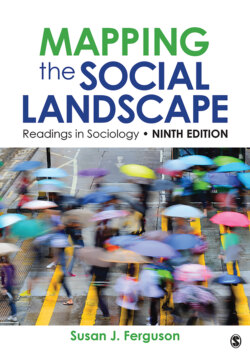Читать книгу Mapping the Social Landscape - Группа авторов - Страница 102
На сайте Литреса книга снята с продажи.
Mothers versus Fathers in the Accomplishment of Masculinity
ОглавлениеIn documenting parental work to accomplish masculinity with and for young sons, I have focused on the encouragement of domestic skills, nurturance, and empathy; discouragement of icons of femininity; and heterosexual parents’ concerns about homosexuality. Within all three of these arenas, variation by parental gender was evident. Although both mothers and fathers were equally likely to express a combination of positive and negative responses to their sons’ perceived gender nonconformity, with domestic skills and empathy accepted and icons of femininity rejected, the acceptance was more pointed for mothers, and the rejection was more pointed for fathers. More fathers (11 of 14) than mothers (12 of 17) of sons indicated negative reactions to at least one of the icons discussed. Fathers also indicated more categorically negative responses: 7 of the 14 fathers but only 2 of the 17 mothers reported simply saying “no” to requests for things such as Barbie dolls, tea sets, nail polish, or ballet lessons, whether actual requests or hypothetical ones. Although fewer parents referred to excessive emotionality and passivity as concerns, the 6 parents of sons who did so included 4 fathers and 2 mothers, and here too, the quotes indicate a more categorical rejection by fathers.
Another indication of more careful policing of icons of femininity by fathers is evident in comments that placed age limitations on the acceptability of such icons. Four fathers (but no mothers) commented with acceptance on activities or interests that they consider atypical for boys but went on to note that these would bother them if they continued well past the preschool age range. The following quote from a father is typical of these responses. After noting that his four-year-old son sometimes asks for toys he thinks of as “girl toys,” he went on to say, I don’t think it will ruin his life at this age but … if he was 12 and asking for it, you know, My Little Pony or Barbies, then I think I’d really worry (white, middle-class, heterosexual father). While comments like this one were not coded as negative responses, since they involved acceptance, I mention them here as they are consistent with the tendency for fathers to express particular concern about their sons’ involvement with icons of femininity.
Three of 15 heterosexual mothers and 4 of 12 heterosexual fathers of sons responded negatively to the possibility of their son’s being, or being perceived as, gay. These numbers are too small to make conclusive claims comparing mothers and fathers. But this pattern is suggestive of another arena in which fathers—especially heterosexual fathers—may stand out, especially taken together with another pattern. Implicit in the quotes offered above related to homosexuality is a suggestion that heterosexual fathers may feel particularly responsible for crafting their sons’ heterosexual orientation. In addition, in comparison to mothers, their comments are less likely to refer to fears for how their son might be treated by others if he were gay and more likely to refer to the personal disappointment they anticipate in this hypothetical scenario….
